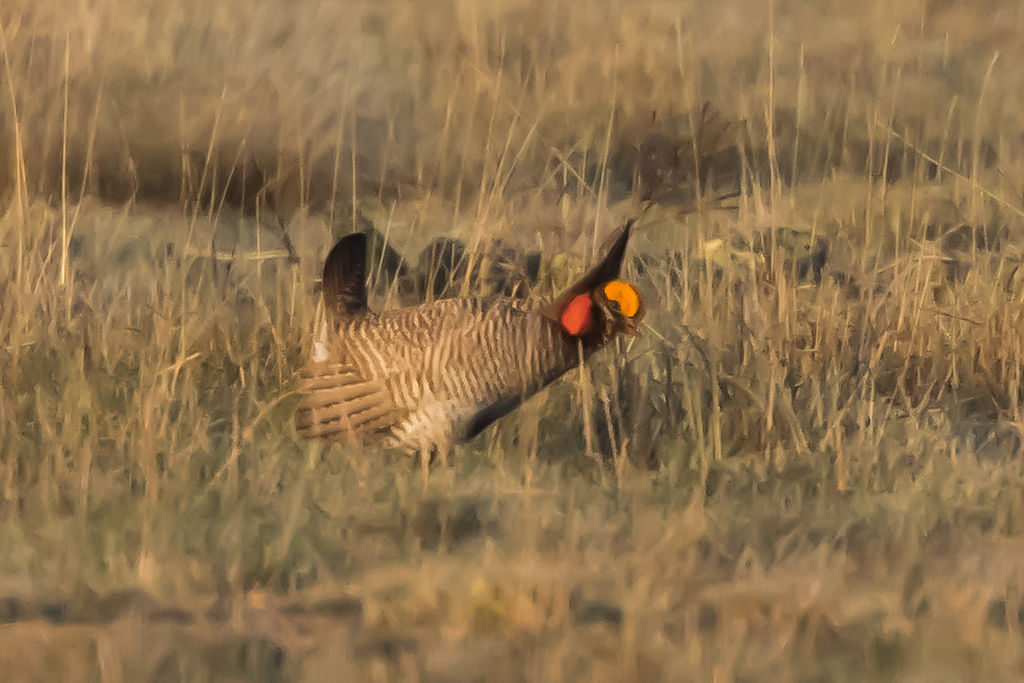 A Lesser Prairie-Chicken dances on a lek on Colorado. Photo courtesy of Ron Knight from Seaford, East Sussex, United Kingdom, CC BY 2.0 https://creativecommons.org/licenses/by/2.0, via Wikimedia Commons
A Lesser Prairie-Chicken dances on a lek on Colorado. Photo courtesy of Ron Knight from Seaford, East Sussex, United Kingdom, CC BY 2.0 https://creativecommons.org/licenses/by/2.0, via Wikimedia Commons
How can we conserve wildlife while increasing energy produced by wind?
Abstract
How to shape the anticipated build-out of industrial-scale renewable energy in a way that minimizes risk to wildlife remains contentious. The challenge of balancing wildlife conservation and decarbonization of the electricity sector is well illustrated in the grasslands and shrub-steppe of North America. Here, several endemic species of grouse are the focus of intensive, long-term conservation action by a host of governmental and nongovernmental entities, many of whom are now asking whether anticipated increases in the number of wind-energy facilities will exacerbate declines or prevent recovery of these species. To address this question, we synthesized the potential consequences of wind-energy development on prairie grouse. Published literature on behavior or demography of prairie grouse at wind-energy facilities is sparse, with studies having been conducted at only 5 different facilities in the United States. Only 2 of these studies met the standard for robust impact analysis by collecting pre-construction data and using control sites or gradient designs. Only one species, greater prairie chicken, had published results available for >1 facility. Most (10⁄12) studies also drew conclusions based on short (<4 years) periods of study, which is potentially problematic when studying highly philopatric species. Given these caveats, we found that, in the short-term, adult survival and nest success appear largely unaffected in populations exposed to wind-energy facilities. However, changes in habitat use by female greater sage-grouse and female greater prairie-chicken during some seasons and reduced lek persistence among male greater prairie-chickens near wind turbines suggest behavioral responses that may have demographic consequences. Prairie grouse can coexist with wind-energy facilities in some cases, at least in the short term, but important uncertainties remain, including the potential for long-term, cumulative effects of the extensive development expected as states attempt to meet goals for generating electricity from renewable sources.